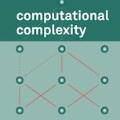Emerging real-time applications such as those classified under ultra-reliable low latency (uRLLC) generate bursty traffic and have strict Quality of Service (QoS) requirements. Passive Optical Network (PON) is a popular access network technology, which is envisioned to handle such applications at the access segment of the network. However, the existing standards cannot handle strict QoS constraints. The available solutions rely on instantaneous heuristic decisions and maintain QoS constraints (mostly bandwidth) in an average sense. Existing works with optimal strategies are computationally complex and are not suitable for uRLLC applications. This paper presents a novel computationally-efficient, far-sighted bandwidth allocation policy design for facilitating bursty traffic in a PON framework while satisfying strict QoS (age of information/delay and bandwidth) requirements of modern applications. To this purpose, first we design a delay-tracking mechanism which allows us to model the resource allocation problem from a control-theoretic viewpoint as a Model Predictive Control (MPC). MPC helps in taking far-sighted decisions regarding resource allocations and captures the time-varying dynamics of the network. We provide computationally efficient polynomial-time solutions and show its implementation in the PON framework. Compared to existing approaches, MPC reduces delay violations by approximately 15% for a delay-constrained application of 1ms target. Our approach is also robust to varying traffic arrivals.
翻译:被动光学网络(PON)是一种受欢迎的接入网络技术,其设想是在网络的接入部分处理这类应用程序。然而,现有标准无法处理严格的 QOS 限制。现有解决方案依赖于即时超常决定,并保持平均意义上的QOS限制(大多数带宽)。现有的最佳战略工作在计算上十分复杂,不适合ULLLC应用程序。本文展示了一种新的计算效率高的、有远见的带宽分配政策设计,用于便利PON框架内的突发交通,同时满足网络接入部分的严格QOS(信息/接力和带宽)要求。为此,我们首先设计了一种延迟跟踪机制,使我们能够从控制-理论角度将资源分配问题模型预测控制(MPC)作为模式。 MPC还帮助在资源分配和高超视率宽带应用方面作出具有远见卓识的决定,同时满足现代应用程序(信息/接力和带带宽)的严格QOS(信息/接力和带宽频带宽)要求。为此,我们设计了一个跟踪机制,以便从控制-理论方法的角度将资源配置问题作为模型预测控制(MPC) 。 MPC 也帮助就资源分配的深度决定如何运用资源配置和模拟解决方案的实施做出远视远的定位框架。




